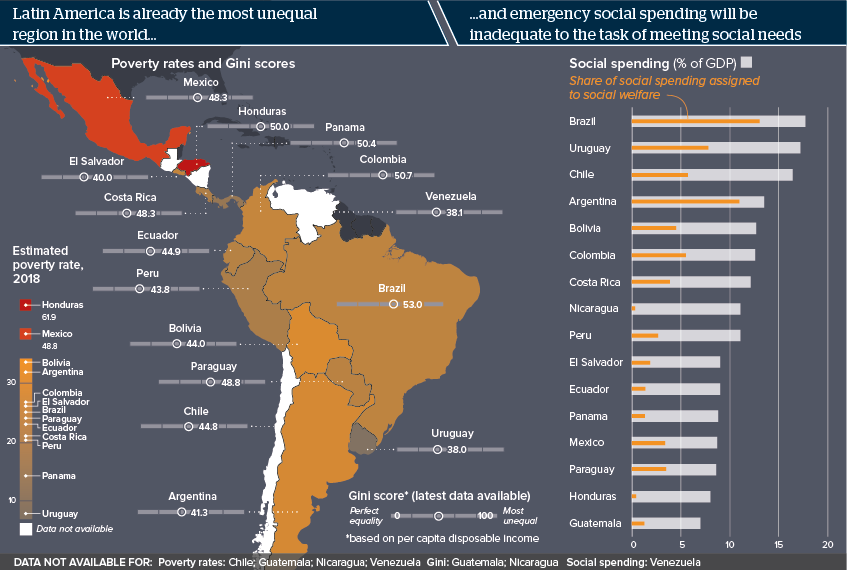Latin America poverty progress is being reversed
Slower growth is undermining advances in reducing poverty and inequality, raising instability risks
Source: UN Economic Commission for Latin America and the Caribbean (ECLAC); IMF; F. Solt’s Standardized World Income Inequality Database
Outlook
After falling sharply since 2002 on the back of the global commodities boom, poverty in Latin America began to rise again from 2016 and is estimated to reach 30.8% of the population (191 million people) in 2019.
Lower growth -- the IMF expects the region to grow by only 0.2% in 2019 and 1.8% in 2020, while ECLAC forecasts 0.1% and 1.4% -- is set to worsen this trend, setting back efforts to reduce poverty and inequality and to appease protests in many parts of the region. Instability in turn may see a further drop in growth.
Impacts
- The impact of continuing protests in Chile may see the economy enter recession, fuelling dissent.
- Social protection spending risks crowding out resources for education, health and environmental services.
- Protests are likely to spread in the coming year amid economic turmoil.
- Argentina, Nicaragua and Venezuela are expected to remain in recession this year and next.
See also
- Latin American education failings weigh on progress - Jan 3, 2020
- Latin America informal labour brings benefits and woes - Oct 4, 2019
- Nutrition issues carry long-term cost in Latin America - Jan 8, 2019
- Latin America political inequality is set to increase - Dec 12, 2018
- More graphic analysis
